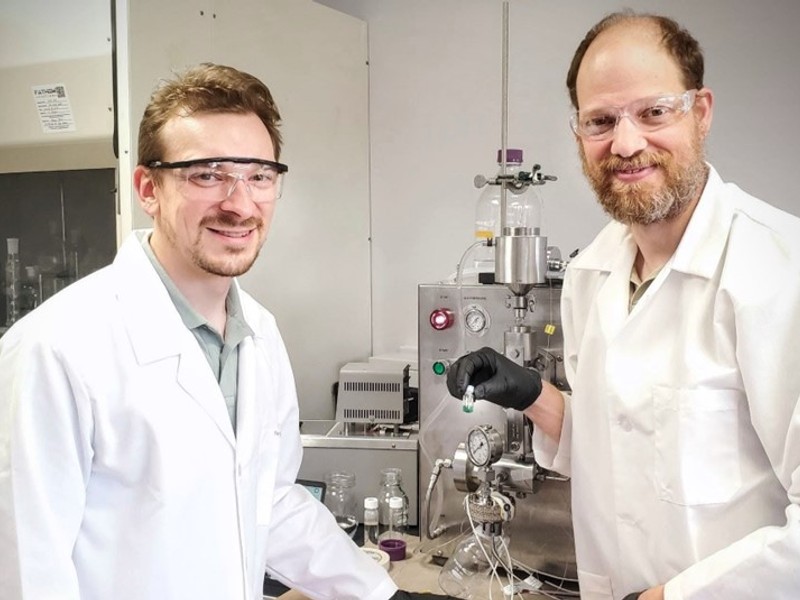BUFFALO, NY/OSLO, 24 JUL—New research is set to investigate a pioneering approach using protein-tagging technology in nanoparticles that could speed up making vaccines against epidemic and pandemic threats, including a future ‘Disease X’. The nanoparticle design could also support more potent and targeted vaccine delivery and help boost immune responses.
The expert team, based at the pharmaceutical start-up POP BIO, are being awarded up to US $1.5 million from CEPI to advance research into POP BIO’s SNAP™ (Spontaneous Nanoliposome Antigen Particleization) protein vaccine platform. The technology has been designed to rapidly develop potent nanoparticle vaccine candidates, while simultaneously purifying antigens. Inert protein fragments of a disease-causing pathogen, known as antigens, are added to a vaccine to teach the body’s immune system how to recognise and defend against it.
“Antigens added to vaccine formulations have to be purified to ensure safety, efficacy and consistency of the vaccine. However, conventional purification methods can be costly and involve multiple steps, typically lasting several days, slowing down the vaccine development process” said Dr. Kent Kester, Executive Director of Vaccine R&D at the Coalition for Epidemic Preparedness Innovations (CEPI).
Through an innovative approach, the SNAP proprietary technology makes use of a small protein tag, termed a polyhistidine or his-tag, that is attached to the vaccine antigens—for a purification technique commonly used in basic protein research—and is also used to embed them into small, spherical liposomes combined with metallic cobalt to aid the immune response. Compared to traditional purification methods, the enhanced technique could rapidly remove potential contaminants from vaccine antigens in as little as 30 minutes.
“As every day counts during an incipient outbreak, faster development of purified vaccine constructs could help more quickly contain a fast-spreading new or re-emerging viral threat before it spreads to pandemic proportions, in line with the 100 Days Mission” says Dr. Kester.
SNAP’s versatile plug-and-play design could also be beneficial in an outbreak as the antigen sourced from the disease-causing pathogen could be easily and quickly “plugged” into the vaccine platform for faster development and deployment of vaccines. With fewer, less complex stages involved in its purification process, the SNAP technology could also be more efficient than traditional protein vaccine purification methods, producing higher antigen yields that help extend available vaccine supplies and allow more people to be vaccinated in an outbreak.
“The dual use of the his-tag to facilitate protein purification and to then easily, rapidly and stably convert those proteins into potent nanoparticle vaccine candidates has been instrumental for the momentum POP BIO has achieved,” says POP BIO co-founder Jonathan Lovell. “Importantly, when the his-tag is used to anchor proteins on the surface SNAP nanoparticles, there is no significant immune response against the tag itself, as observed in human clinical testing.”
The SNAP technology has already been tested through a large-scale, late-stage Phase III trial of SNAP’s COVID-19 vaccine, where it demonstrated positive safety and efficacy results. Positive results were also published earlier this year in the journal Cell Biomaterials for an avian H5N1 influenza vaccine developed with POP BIO’s SNAP platform in preclinical models.
The CEPI-supported project will first explore the technology’s potential to protect against severe fever with thrombocytopenia syndrome (SFTS), a tick-borne viral disease affecting East Asia, in preclinical trials. Led by POP BIO, the project will be performed by an international team of researchers at the University of Buffalo and SUNY Upstate Medical University in the US and The National Institute of Infectious Diseases, within the Japan Institute for Health Security. CEPI is exploring options to select antigens for testing from CEPI’s existing partners, including our partners using AI to inform antigen design.
If the project is successful, the SNAP platform has the potential to be rapidly adapted to develop vaccine candidates against other pathogens, including a Disease X.
CEPI and POP BIO are committed to enabling equitable access to the outputs of their partnership, in line with CEPI’s Equitable Access Policy. Project results, including related data, will be published open access for the benefit of the global scientific community.
ENDS
About POP Biotechnologies
POP Biotechnologies, Inc. is a privately held biotechnology company developing novel therapeutics and vaccines based on its proprietary porphyrin-phospholipid (PoP) liposome technology. The PoP platform, exclusively licensed from the State University of New York Research Foundation (SUNY-RF), was invented by co-founder Dr. Jonathan Lovell at SUNY Buffalo. POP Biotechnologies operates from the SUNY Buffalo incubator at Baird Research Park.
About POP BIO’s SNAP™ Technology
POP BIO’s SNAP™ (Spontaneous Nanoliposome Antigen Particleization) enables therapid development of potent particle-based vaccines by leveraging a cobalt-modified PoP liposome system (CoPoP). This platform allows for stable, spontaneous liposome display of protein and peptide antigens, substantially enhancing immunogenicity. POP BIO’s SNAP™ demonstrated favorable safety and immunogenicity profiles in Phase 3 trials of the EuCorVac-19 COVID-19 vaccine.
About CEPI
CEPI was launched in 2017 as an innovative partnership between public, private, philanthropic and civil organisations. Its mission is to accelerate the development of vaccines and other biologic countermeasures against epidemic and pandemic disease threats and enable equitable access to them. CEPI has supported the development of more than 50 vaccine candidates or platform technologies against multiple known high-risk pathogens and is also advancing the development of rapid response platforms for vaccines against a future Disease X. Central to CEPI’s pandemic-beating five-year plan for 2022-2026 is the ‘100 Days Mission’ to compress the time taken to develop safe, effective, globally accessible vaccines against new threats to just 100 days.
